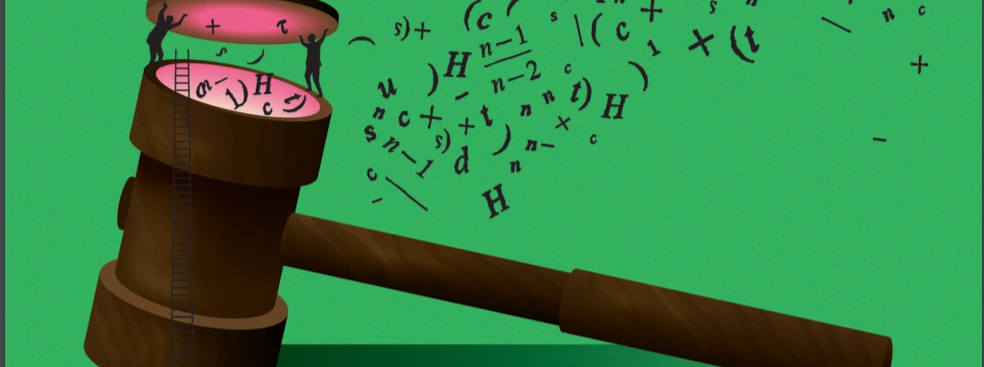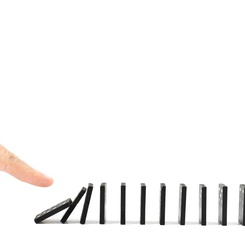To explain the relevance of economics to business school students, we give the example of how an abstract subject like theoretical physics can be relevant for an applied discipline like engineering. We cannot construct a bridge that would defy the laws of physics, the same way that we cannot imagine a business independent from the economic background. The economist’s job is studying the fundamental principles of the different means of allocating our limited resources to satisfy our needs. The task of choosing the right means and tailoring it for particular objectives falls largely to the practitioners like business leaders, politicians, and activists.
The 2020 Nobel Prize laureates in economics make us doubt the strictness of this division of labor. Robert Wilson and Paul Milgrom of Stanford University are honored by the Royal Swedish Academy of Sciences for both their groundbreaking contributions to the fundamental auction theory and their leading role in the practical implementation of new auction formats for complex environments. The first auction they helped design together in 1994 was for the allocation of radio frequencies to the telecom operators in the US. This very first radio spectrum auction raised 617 million dollars for the US government. In the decades to follow, similar frequency auctions have generated more than 200 billion dollars for several countries around the world. More importantly, these auctions resulted in a more “efficient” division of the radio spectrum, making it more likely that each block of frequency is owned by the firm that would make the best use of it and create the highest value for its clients.
Private versus Common Values
The success of the first spectrum auction in 1994 was also a factor in an earlier Nobel Prize, awarded to William Vickrey in 1996. Although the historical accounts of auctions go back at least to the ancient Babylonian times, the modern theory of auctions started with Vickrey’s work in the 1960s (1). To allocate an object efficiently to the person who desires it the most, Vickrey proposed a simple second-price auction: each person interested in the object submits a bid. The highest bidder acquires the object and pays the second-highest submitted bid. At a first glance, making the winner pay a lower price than her bid looks strange. However, thanks to this feature, the bidders refrain from “shading” their bids with the hope of getting a better price. Hence, the bids submitted to Vickrey’s second-price auction reflect the true valuations of the bidders and the highest bidder is indeed the bidder who has the best use of the object that she wins.
The theoretical work of Wilson and Milgrom as well as the practical auction that they designed for the sale of radio frequencies go beyond this Vickrey paradigm. In Vickrey’s “private-values” world, each bidder knows the exact value of winning the auction and acquiring the good for herself. This would be the right description of the situation if you were bidding for a painting with the hope of displaying it in your apartment for your private enjoyment. If, however, you are considering buying the same painting as an investment opportunity, what matters most to you is the resale price that the painting will generate down the road. Because this resale price would be the same for you and your competitors interested in the same painting, the “common-values” narrative of Robert Wilson would give a more useful account of the competition (2).
Winner’s Curse
When an auctioned object has a common-value component, an important worry for a bidder would be winning the auction only because of a judgment error that leads to an overestimation of this common value. Wilson argues that, in order to avoid this “winner’s curse,” the bidders would make conservative bids, reducing the seller’s revenue. The remedy for the lower revenue comes from the work of Paul Milgrom, a former graduate student of Robert Wilson at Stanford. In research papers coauthored with Robert Weber, Milgrom showed that the winner’s curse would have a milder effect on bidding behavior, when the bidders know more about each other’s value estimates (3). This finding implies that the auction formats that give more information about the competitors’ bidding behavior would generate a higher sales revenue, challenging an earlier “revenue equivalence” result proved for Vickrey’s private-value setting (4).
From Lab to Life: Radio Frequency Auctions in Practice
The auction format invented by Wilson and Milgrom in 1994 (in collaboration with Preston McAfee) applies this principle of information provision to the sale of radio spectrum. What is peculiar about the radio frequencies is that many telecom firms see them as “complementary goods.” Especially the new entrants to the industry strongly prefer acquiring a critical mass of frequencies in order to provide a better service to their clients and establish their brands. The “simultaneous multiple rounds auction” (SMRA) developed by Wilson and Milgrom invites each firm to bid for multiple frequency blocks. But unlike Vickrey’s second-price auction, SMRA allows bidders to update their bids after learning about the bids submitted by their competitors in the earlier rounds. As the prices increase gradually, each firm learns more about the value estimates of its competitors and bids without much fear of an eventual winner’s curse.
After the success of the first SMRA used for the sale of the radio frequencies in the US, many other countries (Finland, India, Canada, Norway, Poland, Spain, United Kingdom, Sweden, Germany, Australia …) adopted similar formats for their radio spectrum auctions. Moreover, auctions gained practical significance in allocating other limited resources such as electricity, natural resources, and state-owned assets. Wilson, Milgrom, and many other auction theorists got involved in these auctions, either as designers of the auction format, or as consultants for the bidders who wanted to make the most appropriate bids.
In one of the most recent examples of the radio spectrum auctions, the French government raised 2.79 billion euros on October 1st, 2020, by selling frequencies to be used for setting up the 5G communication networks (5). Part of the sale was done by following a multiple round auction similar to the SMRA developed by Wilson and Milgrom. The auction started at a reservation price of 70 million euros per 10MHz block. After 17 rounds of competitive bidding by Orange, SFR, Bouygues, and Free over three days, this price increased to 126 million euros per block.
It is not surprising that fundamental work in an abstract topic finds a practical use later. The only practical use for complex numbers, essentially, is in the field of electrical engineering. Yet, mathematicians have conceived these numbers centuries before the discovery of electricity. What is distinctive about auction theory is that it has found its place in our policy toolbox within merely forty years after its conception, also blurring the distinction between the theorist and the practitioner.
Image credits: © Johan Jarnestad/The Royal Swedish Academy of Sciences
Additional Readings
https://www.nobelprize.org/uploads/2020/09/popular-economicsciencesprize2020.pdf
https://www.nobelprize.org/uploads/2020/09/advanced-economicsciencesprize2020.pdf
Milgrom, P. (1989). Auctions and Bidding: A Primer. Journal of Economic Perspectives, 3 (3): 3-22.
Milgrom, P. (2004). Putting auction theory to work. Cambridge: Cambridge University Press
References
[1] Vickrey, W. (1961). Counterspeculation, auctions, and competitive sealed-tenders. Journal of Finance, 16, 8–37.
[2] Wilson, R. B. (1967). Competitive bidding with asymmetrical information. Management Science, 13, 816–820.
[3] Milgrom, P. and Weber, R. J. (1982). A theory of auctions and competitive bidding. Econometrica, 50, 1089–1122.
[4] Myerson, R. B. (1981). Optimal auction design. Mathematics of Operations Research, 6, 58–73.
[5] https://en.arcep.fr/news/press-releases/view/n/5g-011020.html









